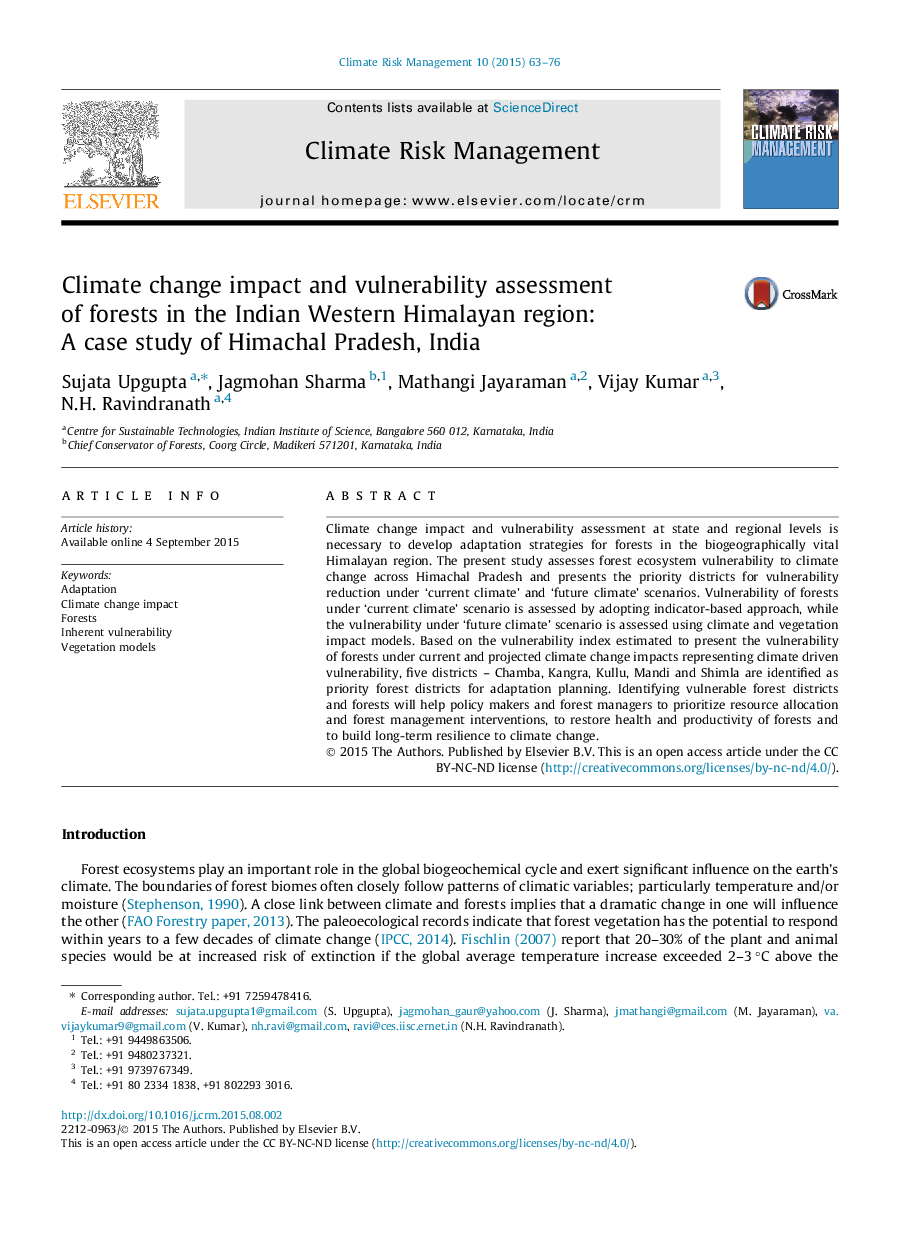| Article ID | Journal | Published Year | Pages | File Type |
|---|---|---|---|---|
| 1051217 | Climate Risk Management | 2015 | 14 Pages |
•Forest vulnerability assessed under current and future climate scenarios.•Indicator-based approach used to assess vulnerability under current climate.•Vulnerability under future climate assessed using vegetation models.•Both current and future vulnerability necessary to deal with climate change.•Priority forest districts identified for enhancing forest adaptation.
Climate change impact and vulnerability assessment at state and regional levels is necessary to develop adaptation strategies for forests in the biogeographically vital Himalayan region. The present study assesses forest ecosystem vulnerability to climate change across Himachal Pradesh and presents the priority districts for vulnerability reduction under ‘current climate’ and ‘future climate’ scenarios. Vulnerability of forests under ‘current climate’ scenario is assessed by adopting indicator-based approach, while the vulnerability under ‘future climate’ scenario is assessed using climate and vegetation impact models. Based on the vulnerability index estimated to present the vulnerability of forests under current and projected climate change impacts representing climate driven vulnerability, five districts – Chamba, Kangra, Kullu, Mandi and Shimla are identified as priority forest districts for adaptation planning. Identifying vulnerable forest districts and forests will help policy makers and forest managers to prioritize resource allocation and forest management interventions, to restore health and productivity of forests and to build long-term resilience to climate change.
